#united nations biodiversity
Text
Nairobi Observance of the International Day for Biodiversity 2024.
The United Nations has proclaimed May 22 as International Day for Biological Diversity (IDB) to increase understanding and awareness of biodiversity issues. When first created by the Second Committee of the UN General Assembly in late 1993, 29 December (the date of entry into force of the Convention of Biological Diversity), was designated. In December 2000, the UN General Assembly adopted 22 May as IDB, to commemorate the adoption of the text of the Convention on 22 May 1992 by the Nairobi Final Act of the Conference for the Adoption of the Agreed Text of the Convention on Biological Diversity. This was partly done because it was difficult for many countries to plan and carry out suitable celebrations for the date of 29 December, given the number of holidays that coincide around that time of year.
Watch the International Day for Biodiversity Celebrations!

#22 may#biodiversity#biological diversity#international day for biological diversity#convention on biological diversity#united nations biodiversity#united nations in nairobi#genetic resources#be part of the plan#part of the plan#panel discussion#unon#biodiversity crisis#biodiversity conservation#climate crisis#triple planetaey crisis
5 notes
·
View notes
Text
Masterpost: Reasons I firmly believe we will beat climate change
Posts are in reverse chronological order (by post date, not article date), mostly taken from my "climate change tag," which I went through all the way back to the literal beginning of my blog. Will update periodically.
Especially big deal articles/posts are in bold.
Big picture:
Mature trees offer hope in world of rising emissions (x)
Spying from space: How satellites can help identify and rein in a potent climate pollutant (x)
Good news: Tiny urban green spaces can cool cities and save lives (x)
Conservation and economic development go hand in hand, more often than expected (x)
The exponential growth of solar power will change the world (x)
Sun Machines: Solar, an energy that gets cheaper and cheaper, is going to be huge (x)
Wealthy nations finally deliver promised climate aid, as calls for more equitable funding for poor countries grow (x)
For Earth Day 2024, experts are spreading optimism – not doom. Here's why. (x)
Opinion: I’m a Climate Scientist. I’m Not Screaming Into the Void Anymore. (x)
The World’s Forests Are Doing Much Better Than We Think (x)
‘Staggering’ green growth gives hope for 1.5C, says global energy chief (x)
Beyond Catastrophe: A New Climate Reality Is Coming Into View (x)
Young Forests Capture Carbon Quicker than Previously Thought (x)
Yes, climate change can be beaten by 2050. Here's how. (x)
Soil improvements could keep planet within 1.5C heating target, research shows (x)
The global treaty to save the ozone layer has also slowed Arctic ice melt (x)
The doomers are wrong about humanity’s future — and its past (x)
Scientists Find Methane is Actually Offsetting 30% of its Own Heating Effect on Planet (x)
Are debt-for-climate swaps finally taking off? (x)
High seas treaty: historic deal to protect international waters finally reached at UN (x)
How Could Positive ‘Tipping Points’ Accelerate Climate Action? (x)
Specific examples:
Environmental Campaigners Celebrate As Labour Ends Tory Ban On New Onshore Wind Projects (x)
Private firms are driving a revolution in solar power in Africa (x)
How the small Pacific island nation of Vanuatu drastically cut plastic pollution (x)
Rewilding sites have seen 400% increase in jobs since 2008, research finds [Scotland] (x)
The American Climate Corps take flight, with most jobs based in the West (x)
Waste Heat Generated from Electronics to Warm Finnish City in Winter Thanks to Groundbreaking Thermal Energy Project (x)
Climate protection is now a human right — and lawsuits will follow [European Union] (x)
A new EU ecocide law ‘marks the end of impunity for environmental criminals’ (x)
Solar hits a renewable energy milestone not seen since WWII [United States] (x)
These are the climate grannies. They’ll do whatever it takes to protect their grandchildren. [United States and Native American Nations] (x)
Century of Tree Planting Stalls the Warming Effects in the Eastern United States, Says Study (x)
Chart: Wind and solar are closing in on fossil fuels in the EU (x)
UK use of gas and coal for electricity at lowest since 1957, figures show (x)
Countries That Generate 100% Renewable Energy Electricity (x)
Indigenous advocacy leads to largest dam removal project in US history [United States and Native American Nations] (x)
India’s clean energy transition is rapidly underway, benefiting the entire world (x)
China is set to shatter its wind and solar target five years early, new report finds (x)
‘Game changing’: spate of US lawsuits calls big oil to account for climate crisis (x)
Largest-ever data set collection shows how coral reefs can survive climate change (x)
The Biggest Climate Bill of Your Life - But What Does It DO? [United States] (x)
Good Climate News: Headline Roundup April 1st through April 15th, 2023 (x)
How agroforestry can restore degraded lands and provide income in the Amazon (x) [Brazil]
Loss of Climate-Crucial Mangrove Forests Has Slowed to Near-Negligable Amount Worldwide, Report Hails (x)
Agroecology schools help communities restore degraded land in Guatemala (x)
Climate adaptation:
Solar-powered generators pull clean drinking water 'from thin air,' aiding communities in need: 'It transforms lives' (x)
‘Sponge’ Cities Combat Urban Flooding by Letting Nature Do the Work [China] (x)
Indian Engineers Tackle Water Shortages with Star Wars Tech in Kerala (x)
A green roof or rooftop solar? You can combine them in a biosolar roof — boosting both biodiversity and power output (x)
Global death tolls from natural disasters have actually plummeted over the last century (x)
Los Angeles Just Proved How Spongy a City Can Be (x)
This city turns sewage into drinking water in 24 hours. The concept is catching on [Namibia] (x)
Plants teach their offspring how to adapt to climate change, scientists find (x)
Resurrecting Climate-Resilient Rice in India (x)
#climate change#climate crisis#climate action#climate emergency#climate anxiety#climate solutions#fossil fuels#pollution#carbon emissions#solar power#wind power#trees#forests#tree planting#biodiversity#natural disasters#renewables#renewable electricity#united states#china#india#indigenous nations#european union#plant biology#brazil#uk#vanuatu#scotland#england#methane
1K notes
·
View notes
Text
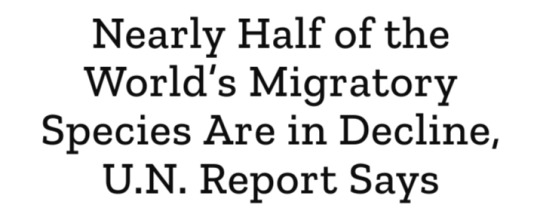
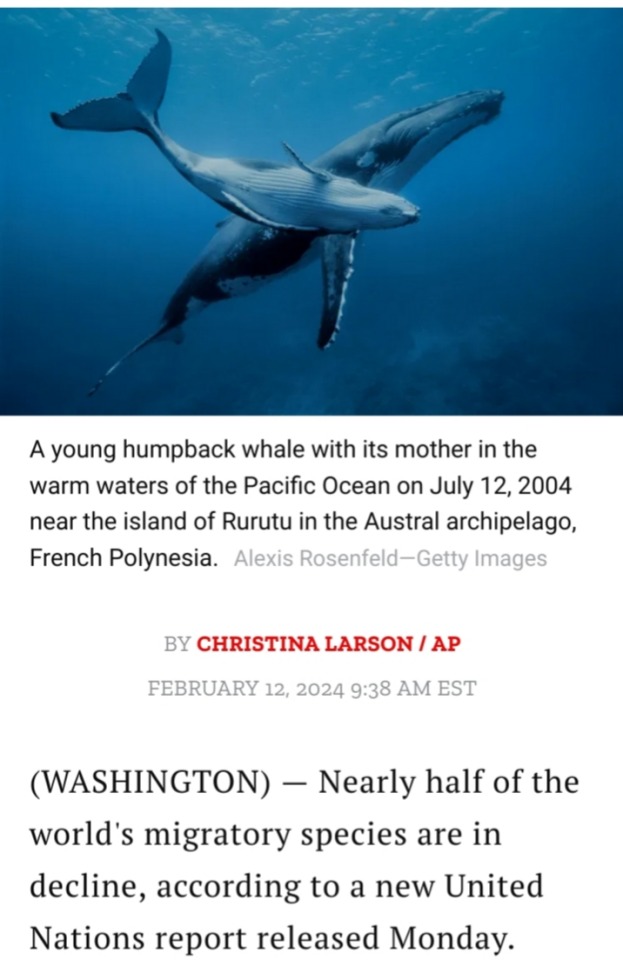
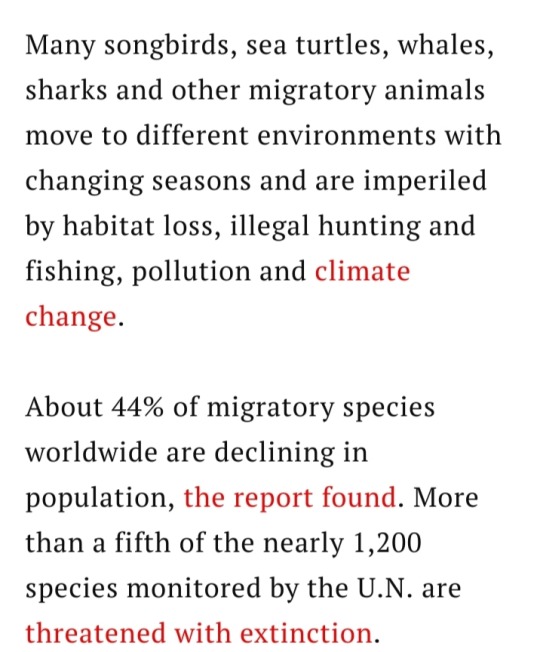

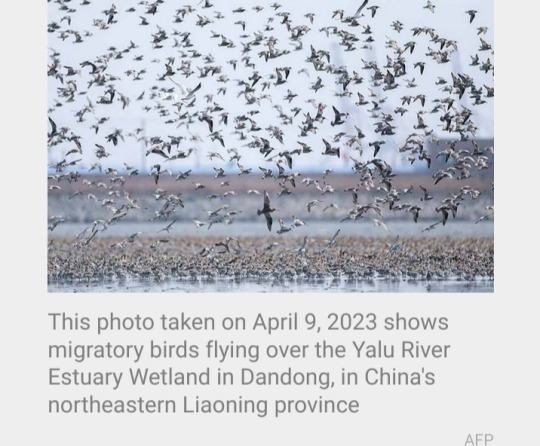



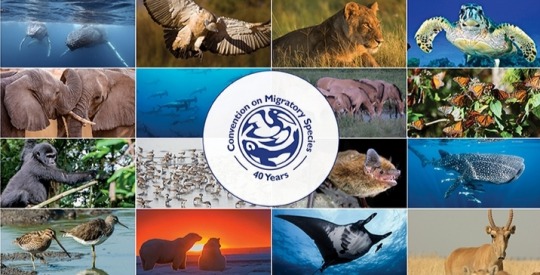

#United Nations#migratory species#wildlife conservation#climate change#habitat loss#pollution#illegal hunting#illegal fishing#International Union for Conservation of Nature's Red List#Wildlife Conservation Society#U.N. Biodiversity Conference#Amazon River#conservation#wildlife#UN Convention on the Conservation of Migratory Species of Wild Animals (CMS)
2 notes
·
View notes
Text
Unveiling the Secrets of Life Below Water: Goal 14 for a Sustainable Future
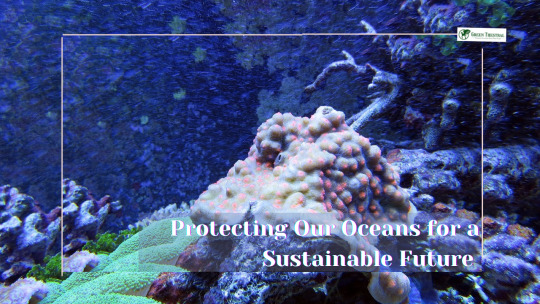
In our journey towards achieving a sustainable future, Goal 14 of the United Nations' Sustainable Development Goals (SDGs) plays a pivotal role. Life Below Water, as it is commonly referred to, focuses on the preservation and sustainable use of oceans, seas, and marine resources. With this goal, the international community aims to safeguard marine ecosystems, mitigate the impacts of human activities, and promote sustainable livelihoods for coastal communities. This article delves into the significance of Goal 14, explores the challenges faced, and highlights the initiatives that can help us ensure a healthier and more vibrant life below water.
Understanding the Importance of Goal 14
The Earth's oceans are vast and cover more than 70% of the planet's surface. They are teeming with life and harbor a remarkable diversity of species and ecosystems. From the mesmerizing coral reefs to the mysterious depths of the abyss, the oceans are a treasure trove of biodiversity, supporting millions of species, including plants, animals, and microorganisms.
Beyond their ecological significance, the oceans play a crucial role in regulating the Earth's climate. They act as a massive heat sink, absorbing a significant amount of the sun's energy and distributing it across the planet. Additionally, oceans play a vital role in the water cycle, facilitating the evaporation of water, which then falls as precipitation and sustains terrestrial ecosystems.
The oceans are not only important for the environment but also for human societies. They provide sustenance to millions of people around the world. Fishing, both for subsistence and commercial purposes, is a primary source of livelihood for coastal communities. The oceans also support economic activities such as tourism, shipping, and offshore industries, contributing significantly to global economies.
However, the delicate balance of marine ecosystems is under threat due to various human activities. Overfishing, driven by unsustainable practices and the demand for seafood, has led to the depletion of fish stocks worldwide. Large-scale industrial fishing, with destructive methods such as bottom trawling, threatens not only the targeted species but also the entire marine food web.
Marine pollution is another significant challenge faced by the oceans. Pollution from land-based sources, including plastic waste, chemicals, oil spills, and agricultural runoff, finds its way into the marine environment, causing severe harm to marine life and ecosystems. The accumulation of plastic debris in the oceans has reached alarming levels, forming giant garbage patches and causing entanglement and ingestion by marine organisms.
Habitat destruction and degradation are also taking a toll on marine ecosystems. Destructive practices such as coral reef destruction, coastal development, and the destruction of mangroves and seagrass beds result in the loss of critical habitats and the disruption of delicate ecological relationships. These habitats serve as nurseries and breeding grounds for many species, and their loss has far-reaching consequences for marine biodiversity.
Furthermore, climate change poses one of the most significant threats to life below water. Rising sea temperatures, ocean acidification, and sea-level rise are already impacting marine ecosystems. Corals, which are vital for the survival of countless marine species, are particularly vulnerable to rising temperatures and increased ocean acidity, leading to coral bleaching events and the degradation of coral reefs.
In recognition of the urgent need to protect and sustainably manage marine resources, Goal 14 of the United Nations' Sustainable Development Goals (SDGs) was established. Also known as Life Below Water, this goal aims to ensure the conservation and sustainable use of the oceans, seas, and marine resources for present and future generations.
Goal 14 encompasses various targets and indicators to guide efforts towards sustainable ocean management. One of the key focuses is the protection and restoration of coral reefs, which are among the most diverse and valuable ecosystems on Earth. Coral reefs provide habitat for numerous species, protect coastlines from erosion, and support vibrant tourism industries. By implementing measures to reduce coral bleaching, enhance reef resilience, and combat destructive practices, Goal 14 seeks to safeguard these vital ecosystems.
Another critical aspect of Goal 14 is the reduction of marine pollution. It calls for the prevention and significant reduction of marine debris, particularly plastic waste. Efforts are being made to promote better waste management systems, recycling and reusing plastics, and raising awareness about the detrimental effects of single-use plastics. Innovative technologies for ocean cleanup are also being developed to tackle existing pollution.
To address the issue of overfishing, Goal 14 emphasizes the need to restore fish stocks to sustainable levels. This involves implementing science-based management plans, combating illegal, unreported, and unregulated fishing, and promoting responsible fishing practices. Creating marine protected areas and adopting ecosystem-based management approaches can help protect critical habitats and ensure the long-term viability of fisheries.
Furthermore, Goal 14 acknowledges the urgent need to address ocean acidification, which poses a grave risk to marine organisms. By reducing carbon dioxide emissions and taking steps to enhance the resilience of marine ecosystems, such as protecting mangroves and seagrass beds, this goal aims to mitigate the impacts of ocean acidification and ensure the survival of vulnerable species.
Achieving Goal 14 requires a collaborative effort from governments, businesses, civil society organizations, and individuals worldwide. International cooperation is crucial to strengthen governance frameworks, regulate resource exploitation, combat illegal fishing, and promote sustainable practices. By taking collective action and embracing sustainable approaches, we can secure a healthier and more vibrant future for life below water.
Challenges and Threats to Life Below Water
The life below water faces a multitude of challenges that require immediate attention and concerted efforts. Overfishing, driven by unsustainable practices and illegal, unreported, and unregulated fishing, has led to a decline in fish stocks worldwide. The loss of biodiversity affects not only marine ecosystems but also the communities that depend on them for food security and economic opportunities.
Marine pollution poses another significant threat. Plastic waste, chemicals, oil spills, and other pollutants contaminate the oceans, harming marine life and ecosystems. The accumulation of plastic debris, in particular, has gained global attention due to its devastating impact on marine organisms and the potential consequences for human health through the food chain.
Ocean acidification, caused by the absorption of excess carbon dioxide from the atmosphere, poses a grave risk to marine organisms such as corals, shellfish, and plankton. Acidic waters can hinder the growth and survival of these organisms, disrupting the entire marine food web and impacting the livelihoods of coastal communities.
Initiatives and Solutions for a Sustainable Life Below Water
Achieving Goal 14 requires a comprehensive approach involving governments, businesses, civil society, and individuals. Several initiatives and solutions have emerged to address the challenges faced by life below water:
Sustainable Fisheries Management: Implementing science-based management plans, promoting responsible fishing practices, and combating illegal fishing are crucial steps towards replenishing fish stocks and ensuring the long-term sustainability of fisheries. Tools like marine protected areas and ecosystem-based management help preserve critical habitats and protect biodiversity.
Marine Pollution Prevention: Reducing plastic pollution and other sources of marine debris is vital. This can be achieved through improved waste management systems, recycling and reusing plastics, and raising awareness about the consequences of single-use plastics. Additionally, promoting the use of biodegradable alternatives and supporting innovative technologies for ocean cleanup can help mitigate the impact of existing pollution.
Climate Change Mitigation and Adaptation: Addressing climate change is fundamental to preserving life below water. Transitioning to renewable energy sources, reducing greenhouse gas emissions, and promoting sustainable coastal development are essential steps in mitigating the impacts of climate change on marine ecosystems. Additionally, enhancing the resilience of coastal communities through measures such as mangrove restoration, coastal protection, and sustainable tourism can aid adaptation efforts.
International Cooperation and Governance: Collaboration among nations is crucial for the effective implementation of Goal 14. Strengthening international frameworks, such as the United Nations Convention on the Law of the Sea (UNCLOS), and promoting regional cooperation can help combat illegal fishing, regulate resource exploitation, and ensure the sustainable use of marine resources.
Conclusion
Preserving life below water is not only crucial for the health of our oceans but also for the overall well-being of our planet. Goal 14 provides a roadmap for sustainable ocean management, aiming to conserve marine biodiversity, mitigate pollution, and promote the sustainable use of marine resources. By taking action at individual, local, and global levels, we can make a significant difference in ensuring a healthier and more vibrant future for life below water. Let us join hands and work together to safeguard the oceans for generations to come.
#Sustainable management of marine resources#Conserving marine biodiversity#Protecting coral reefs and marine ecosystems#Sustainable fishing practices for life below water#Reducing marine pollution for a healthier ocean#Restoring fish stocks for sustainable fisheries#Addressing the threats of overfishing#Combating illegal fishing activities#Preserving the delicate balance of marine ecosystems#Tackling plastic pollution in the oceans#Solutions for ocean acidification#Climate change impact on life below water#Sustainable tourism and the oceans#Promoting responsible coastal development#Achieving United Nations' Goal 14 for a sustainable future#Enhancing resilience of coastal communities#Sustainable livelihoods for coastal populations#Importance of ocean conservation and sustainability#Preserving marine habitats and species diversity#Ecosystem-based management for marine resources#Strengthening international cooperation for Goal 14#Achieving sustainable development through Goal 14#Role of marine protected areas in conservation#Long-term viability of marine ecosystems#Promoting sustainable shipping practices#Economic benefits of sustainable ocean management#Balancing human activities with marine conservation#The significance of Goal 14 in the SDGs#Ensuring a vibrant future for life below water#Global initiatives for the protection of marine environments
2 notes
·
View notes
Text
Adopt-a-River
The UN Environment Programme and Rotary International's Adopt-a-River initiative uses my map to spread the message about river pollution and its impact on the planet. We are very proud to be involved in this!

Read more about the program and watch their highly informative video on https://restorerivers.org/:
youtube
#adopt a river#rivers#river ecology#river restoration#biodiversity#unep#united nations environment programme#geography#maps#cartography#my art#maps reimagined#watershed map#watersheds#climate change#environmental activism#environmental action#Youtube
2 notes
·
View notes
Photo
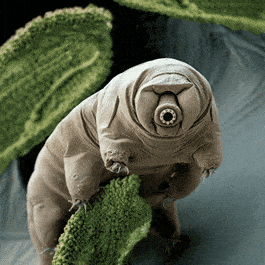
Don't be a Butthole! Practice Safe Sex!
#giphy#united nations#sdg#soil#biodiversity#fao#gsp#sustainable development goals#food and agriculture organization#egyptiancat204#soils#faosoils#global soil partnership#gsobi#healthy soils#soil biodiversity
3 notes
·
View notes
Text
Unified Treaty for High Seas
UN Drafts Environmental Protection Treaty for High Seas
A unified treaty to protect open ocean biodiversity has been signed by the nations of the UN, for the first time.
In 1944, the U.N. Convention on the Law of the Sea was enacted, protecting international rights at sea and putting into place a few environmental laws, mostly about dumping waste. It has only been occasionally updated since. But for the past twenty years, a new framework to protect…

View On WordPress
#high seas#marine conservation#oceans#rebecca helm#U.N. Biodiversity Conference#U.N. convention on the law of the sea#United Nations
5 notes
·
View notes
Text
May 10th as International Day of Argania.

This unique region, where argan trees have been cultivated for centuries combines agricultural biodiversity, resilient ecosystems and valuable cultural heritage. For that reason, it has gotten recognition and protection from various UN entities.
The United Nations Educational Scientific and Cultural Organization (UNESCO) designated in 1988 the endemic production area as the Arganeraie Biosphere Reserve. Also, all know-how concerning the argan tree was inscribed in 2014 on the UNESCO Representative List of the Intangible Cultural Heritage of Humanity.
Moreover, in December 2018, FAO recognized the Argan-based agro-sylvo-pastoral system within the area of Ait Souab - Ait Mansour in Morocco as a Globally Important Agricultural Heritage System.
And lastly, in 2021, the United Nations General Assembly proclaimed 10 May the International Day of Argania. The resolution, submitted by Morocco, was co-sponsored by 113 member states of the United Nations and adopted by consensus.
#Arganeraie Biosphere Reserve#10 may#ARGANIA#International day of Argania#united nations general assemly#agro-sylvo-pastoral system#Argan-based#agricultural biodiversity#resilient ecosystems#sustainable cultivation practices#cultivating#United Nations Educational Scientific and Cultural Organization (UNESCO)#argan forest#argan ecosystem#argania tree#argan species#argan tree
0 notes
Text
Self-determination and indigenous autonomies - Indigenous solutions to the climate crisis/biocrisis in the Amazon (UNPFII Side Event).
Objectives:
Present the advances in the promotion and consolidation of indigenous autonomies in the Amazon basin as a commitment to maintaining life on the planet.
Share self-determination initiatives in indigenous territorial management and the protection of forests and biodiversity.
Disseminate experiences on indigenous territorial corridors, both for the protection of peoples in isolation and initial contact, and for biodiversity.
Related Sites and Documents
Concept Note
Watch the Self-determination and indigenous autonomies - Indigenous solutions to the climate crisis/biocrisis in the Amazon (UNPFII Side Event).
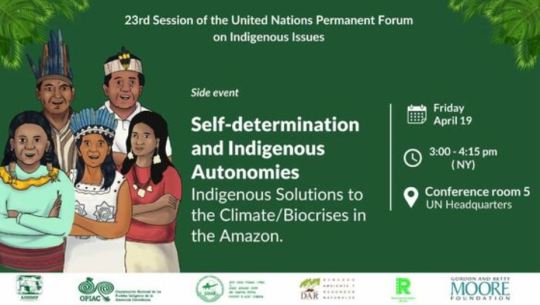
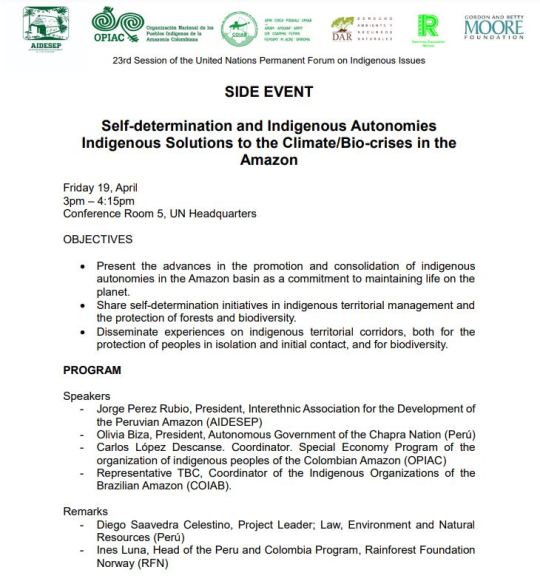
#indigenous autonomies#tribal groups#right to self determination#permanent forum on indigenous issues#unfpii23#side-events#conference room 5#united nations headquarters#forests and biodiversity#indigenous territorial corridors#amazonian#Disseminate experiences#peoples in isolation#aboriginal#initial contact#indigenous territorial management
0 notes
Text
(12th meeting) - Fourth Meeting of the Subsidiary body on Implementation - Consideration of conference room papers.
The Subsidiary Body was established under Article 25 of the Convention on Biological Diversity. In addition, in its Article 27, the Nagoya Protocol on Access to Genetic Resources and the Fair and Equitable Sharing of Benefits Arising from their Utilization provides that any subsidiary body established by or under the Convention may serve the Nagoya Protocol.
Convention on Biological Diversity, United Nations Biodiversity, UN Environment Programme, UN Web TV
Watch the (12th meeting) - Fourth Meeting of the Subsidiary body on Implementation - Consideration of conference room papers
#subsidiaby body#nagoya protocol#biological diversity#biodiversity crisis#sbi4#part of the plan#the biodiversity plan#united nations biodiversity#united nations in nairobi#un environment#unon#fair and equitable sharing#genetic resources
0 notes
Text
"For over a decade, the Yosemite toad has been recognized as a federally threatened species, after experiencing a 50% population decline during the Rim Fire of 2013.
The wildfire, which encompassed a mass of land near Yosemite National Park, made the amphibian species especially vulnerable in its home habitat.
Native to the Sierra Nevada, the toads play a key role in the area’s ecosystem — and conservationists stepped in to secure their future.
In 2017, the San Francisco Zoo’s conservation team began working with the National Park Service, Yosemite Conservancy, U.S. Fish & Wildlife Service, California Department of Fish & Wildlife, and the U.S. Geological Survey.
The goal of all of these stakeholders? To raise their own Yosemite toads, re-establishing a self-sustaining population in the wild.
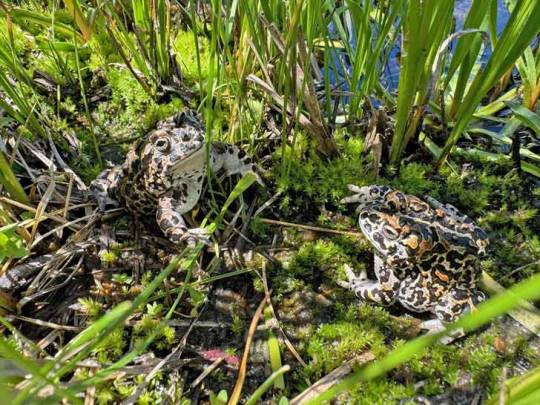
“Over the past several years, SF Zoo’s conservation team has been busily raising hundreds of these small but significant amphibians from tadpole stage, a species found only in the Sierra Nevada, for the purpose of reintroducing them to an area of Yosemite National Park where it was last seen 11 years ago,” the zoo shared on social media.
By 2022, a group of toads were deemed ready for release — and at the end of June of this year [2024], 118 toads were flown via helicopter back to their habitat.
“It’s the first time anyone has ever raised this species in captivity and released them to the wild,” Rochelle Stiles, field conservation manager at the San Francisco Zoo, told SFGATE. “It’s just incredible. It makes what we do at the zoo every day worthwhile.”
Over the past two years, these toads were fed a diet of crickets and vitamin supplements and were examined individually to ensure they were ready for wildlife release.
Zoo team members inserted a microchip into each toad to identify and monitor its health. In addition, 30 of the toads were equipped with radio transmitters, allowing their movements to be tracked using a radio receiver and antenna.
The project doesn’t end with this single wildlife release; it’s slated to take place over the next five years, as conservationists continue to collect data about the toads’ breeding conditions and survivability in an ever-changing climate. They will also continue to raise future toad groups at the zoo’s wellness and conservation center...
While the future of the Yosemite toad is still up in the air — and the uncertainty of climate change makes this a particularly audacious leap of faith — the reintroduction of these amphibians could have positive ripple effects for all of Yosemite.
Their re-entry could restore the population balance of invertebrates and small vertebrates that the toads consume, as well as balance the food web, serving as prey for snakes, birds, and other local predators.
“Zoo-reared toads can restore historic populations,” Nancy Chan, director of communications at the San Francisco Zoo, told SFGATE.
Stiles continued: “This is our backyard, our home, and we want to bring native species back to where they belong.”
-via GoodGoodGood, July 11, 2024
#yosemite#yosemite national park#california#united states#amphibian#frogs and toads#frogblr#frogposting#toadblr#toad#endangered species#wild animals#biodiversity#wildlife conservation#wildlife#good news#hope
1K notes
·
View notes
Text
#30x30#60x40#anthropocene#biodiversity#candice gaukel andrews#earth day#earth day 2024#environment#half earth#microplastics#natural habitat adventures#nathab#nature#nature lovers#nylon#placenta#plastic alternatives#plastics#plastic pollution#polyester#polymers#science#science and environment#scientific research#single-use plastics#wildlife#world wildlife fund#united nations global plastics treaty#wwf
0 notes
Text
Preserving Egypt’s Natural and Cultural Heritage: Embracing Egypt’s Local Tribal Communities and Protected Areas.

An interwoven, harmonious, and intimate relationship is forged between local communities and the natural ecosystems that surround them. For millennia, tribal communities have thrived in treacherous and unforgiving natural conditions, enduring the scorching desert sun and the chilling winters along steep mountain ranges. The deep bond with nature reflects the significance of environmental conservation and the preservation of cultural heritage.
In Egypt, tribal community culture, tradition, and livelihood are shaped through their interaction with nature. These communities have learned to coexist with nature, developing sustainable methods to derive essential ecosystem services for survival and the conservation of pristine natural resources.
The Guardian reports that the majority of the world’s 6,000 national parks and 100,000 protected places have been established through the displacement of tribal peoples. To counter this concerning trend, the Egyptian Ministry of Environment, UNDP and the Global Environmental Facility (GEF) are championing the inclusion of local tribal communities in the conservation of Egypt’s vast protected areas through their joint Mainstreaming Biodiversity in Egypt’s Tourism (MBDT) project.
The Tribal Talks campaign encompasses five different regions and eleven tribes in Egypt:
Southern Sinai:
The Jebeliya Tribe: The Jebeliya tribe has called the Saint Katherine Protected Area 'home' for 1400 years. The tribe has a deep connection to the Saint Katherine Monastery, providing essential services such as safekeeping, gardening, and traveling to get supplies for centuries.
The Muzeina Tribe: The Muzeina tribe is a prominent tribe in Sinai with origins from Saudi Arabia. They are spread across more than two-thirds of the area, inhabiting the Gulf of Aqaba from Taba to Sharm El Sheikh to Ras Sudr. They were once nomadic pastoralists, but have settled due to education, water availability, and employment. Most of the tribe's members now live by the shore and depend on fishing for their livelihood, which has been their intergenerational profession
The Tarabin Tribe: The Tarabin tribe is considered one of the largest Bedouin tribes in the Sinai Peninsula. They originally arrived in the region from Saudi Arabia around 750 to 1000 years ago.
People of Al Gharqana Village: Gharqana village, north of Sharm El Sheikh, is a quaint fisherman's village that is inhabited by different tribes, mostly Al Muzeina. Fishing is the livelihood for most of the community, except for a few who work in tourism. Gharqana is in Nabq Protected Area, a haven for migrating birds with rare elements like mangrove trees.
Southern Red Sea:
The Ababda Tribe: The Ababda tribe, originally from Saudi Arabia, has inhabited the Red Sea coastline from Ras Ghareb until Halayeb for centuries. Their reliance on nature and limited resources for survival has led to the formation of tribal conservation laws prohibiting the cutting of green trees and allowing the usage of dry ones.
The Bishari Tribe: The Bishari tribe, one of the oldest in Southern Red Sea, arrived over four millennia ago from Northeast Africa and are a major division of the Beja people. They served as border protectors throughout history, speaking Bidhaawyeet or Rotana language.
Nubia:
The Nubians: The Nubians, the oldest ethnic group in Egypt, are indigenous to Nubia and have preserved their language for 7000 years. Women in Nubia are held in high regard and are attributed with the preservation of the Nubian culture, and language as they took care of the villages on their own when men traveled for work.
North Coast:
Matrouh Tribes: The coast of Matrouh is a place of cultural richness, with five main tribes who arrived in Matrouh in two main migrations, the first during the Islamic conquests. Despite living on the coast, their culture is closely tied to the desert, historically having little interaction with the sea. These tribes have adapted to change while still holding onto their cultural heritage in the desert, inspiring to see.
Western Desert:
The Amazigh Tribes: Siwa Oasis is home to the local Amazigh tribes, descendants of North African Amazigh. While the Amazigh lived in Siwa during Pharaonic times, the majority migrated to Siwa after the Islamic conquests due to a drought in North Africa. Today, the current inhabitants of Siwa Oasis are a mix of Amazigh and Arab tribes with a cultural blend between the 2 cultures. They all speak Siwi, a dialect of the Amazighi language.
People of Farafra Oasis: The people of Farafra Oasis have a rich cultural heritage from their diverse origins, with eight main tribes coming from various Arabic countries, intermarrying and creating a unique blend of cultures.
People of Bahareya Oasis: The people of Wahat Bahareya rely on agriculture and tourism for their livelihood. The use of Roman and Pharaonic wells allows for vast amounts of palm trees, but it's in tourism where the people of Bahareya truly shine.
ECO EGYPT is a nationwide campaign that promotes for ecotourism in Egypt’s ecological sites and protected sites. The ECO EGYPT campaign is developed by the Mainstreaming Biodiversity in Egypt’s Tourism Project (MBDT); MBDT is implemented by the Egyptian Environmental Affairs Agency (EEAA) cooperation with the United Nations Development Programme (UNDP) and funded by the Global Environment Facility (GEF) with the National Bank of Egypt (NBE) as a Strategic Partner for the campaign.
#TribalTalks#EcoEgyptExperiences#egypt#arabic language#tribal communities#Biodiversity in Egypt’s Tourism Project (MBDT)#Egyptian Environmental Affairs Agency (EEAA)#United Nations Development Programme (UNDP)#Global Environment Facility (GEF)#Campaign#People of Bahareya Oasis#People of Farafra Oasis#Amazigh Tribes#Matrouh Tribes#nubians#Bishari Tribe#Ababda Tribe#People of Al Gharqana Village#Tarabin Tribe#Muzeina Tribe#Jebeliya Tribe
1 note
·
View note
Text
One World, Shared Goals: Collaborative Actions for SDG Implementation.
Bringing partners from the education sector, private industry, government, children, youth, and student organizations. Together, they will explore the best practices for building effective partnerships to speed up the SDGs implementation.
Side Event at the SDG Action Weekend organized by Permanent Mission of the Federal Republic of Germany to the United Nations in New York/Planning Institute of Jamaica/HH MSII SDG Challenge/UNESCO IESALC/UN MGCY/ Danish UN Youth Delegation / Future Perspectives/ German UN Youth Delegation/ Global Student Forum/Global Youth Biodiversity Network/One Million Teachers/UNESCO SDG4 Youth and Student Network/Save the Children/Stakeholder Group of Persons with Disabilities/The Millennials Movement/World Food Forum/.
To maximize the SDG Summit's impact, the Secretary General is convening an SDG Action Weekend, which will generate opportunities for stakeholders, UN entities, and Member States to convene inside the United Nations Headquarters and set out specific commitments and contributions to drive SDG transformation between now and 2030.
The SDG Action Weekend will consist of the SDG Mobilization Day on Saturday, 16 September, and the SDG Acceleration Day on Sunday, 17 September at UNHQ in New York.
The SDG Action Weekend includes a select number of high-level side-events identified through an open call that concluded in August. They are jointly organized by coalitions of Member States, UN agencies and other international organizations, and global stakeholder networks.
#effective partnership#sdg17#SDG Action#agenda 2030#sustainable development goals#global goals#side event#global partnerships#Permanent Mission of the Federal Republic of Germany to the UN#Planning Institute of Jamaica#UNESCO IESALC#Major Group on Children and Youth#Global Youth Biodiversity Network#UNESCO SDG4 Youth and Student Network#The Millennials Movement#One Million Teachers#stakeholders#member states#united nations entities#Side event
0 notes
Text
PEFC Standard in UAE & Global Sustainability Goals: A Connection Worth Exploring
In a society that is becoming more aware of sustainability and environmental concerns, government, businesses, and even individuals are searching for ways to make a difference towards the creation of a more sustainable future.
One of the most effective initiatives in this pursuit of sustainability can be found in that of the PEFC (Programme for the Endorsement of Forest Certification) certification. This certification program plays a crucial role in aligning and pushing forward sustainable goals across the globe.
On this page, we'll look at the crucial relationship to PEFC Standard in UAE and attainment of these objectives.
Essence of PEFC Certification
Before we get into the details, let's review briefly the core of the concept behind PEFC certification. PEFC is a worldwide-acknowledged forest certification system that encourages sustainable and responsible forest management.
It makes sure that the forests are managed in a manner that takes into account not just environmental conservation, but also the social responsibilities and economic viability.
United Nations Sustainable Development Goals (SDGs)
The United Nations Sustainable Development Goals (SDGs) are a worldwide call to action to eradicate poverty, safeguard the environment, and ensure prosperity for everyone in 2030. The 17 goals are interconnected and cover a variety of global issues, including inequality, poverty and climate change, as well as pollution of the environment, peace and justice.
Connection Between PEFC Certification and SDGs
Let's look at the ways in which PEFC certification fits in with and helps contribute to the attainment of these global sustainable objectives:
1. Goal 13: Climate Action
PEFC-certified forests are a good model for ecologically sustainable management of forests that reduce climate change by capturing carbon dioxide and protecting vital ecosystems. Forests that are well managed are an essential tool to fight climate change.
2. Goal 15: Life on Land
PEFC certification promotes biodiversity conservation and protects of ecosystems. Certified forests help maintain an equilibrium between human activities and nature, which ensures the long-term health of the forests as well as the species they help.
3. Goal 1: No Poverty
PEFC certification helps local communities by providing access to markets that are sustainable for products from the forest. This aids in alleviate poverty and improve the quality of life in forests.
4. Goal 12: Responsible Consumption and Production
PEFC-certified products encourage responsible consumption by making sure that products made from wood are sourced from sustainable and legal sources. Consumers can make educated choices for a more sustainable future.
5. Goal 10: Reduced Inequalities
PEFC certification is a sign of social responsibility in the management of forests. It guarantees respect for the human rights of both workers and indigenous communities are protected, which reduces inequality.
6. Goal 16: Peace, Justice, and Strong Institutions
By preventing illegal logging as well as encouraging responsible and legal forest practices, PEFC certification helps in the development of institutions that are strong as well as the rule of law.
Conclusion
The relationship to PEFC certification and sustainable goals is evident and deep. This certification program plays an essential role in helping to achieve the United Nations' Sustainable Development Goals by promoting sustainable PEFC Forest management and ecological conservation, sustainable economic development and social equality.
As consumers and as stakeholders, Our choices affect us all. By embracing PEFC-certified products and promoting sustainable forest management, we are able to actively participate in the sustainability agenda of the world. It's an opportunity worth investigating and understanding. We must embrace it to ensure a more sustainable and greener sustainable future for everyone.
#PEFC#forest certification#sustainable forest management#United Nations Sustainable Development Goals (SDGs)#biodiversity conservation#sustainability#uae#business#dubai#iso certification#iso consultancy#forest#iso
0 notes
Text
Preserving Nature's Treasure: How National Forest Week in Saskatoon Supports Biodiversity and Sustainable Development

View On WordPress
#biodiversity#Friends of the Saskatoon Afforestation Areas Inc.#George Genereux Urban REgional Park#National Forest Week#Richard St. Barbe Baker#Richard St. Barbe Baker AFforestation ARea#Saskatchewan#Saskatoon#United Nations Decade of Action on Nutrition#United Nations Decade on Ecosystem Restoration
0 notes